Gwyneth Harold Davidson's Blog, page 7
January 16, 2019
Be brave and discover our biases
To reduce transgression, every individual in society needs to experience, from birth, being valued, respected, secure and to be raised to perform lifelong socially cohesive behaviours and self care.
It can be possible if more of us, alive now as adults, recognise the shortcoming in ourselves and commit to change. As this is not going to happen spontaneously, the state and influential non-human, legal citizens (corporations) have a role to be cohesive in action and get as many of us as possible to change these behaviours where it has the most impact. Naturally, these are teachers, caregivers, policymakers and persons who create and distribute content that is widely consumed by our societies.
In the UK today, arising out of comply or explain regulations related to race, sex and gender differences, listed companies are expected to put policies in place to reduce behaviours that are unfair to certain segments of the population.
In the USA, it is the radical activists against policies of the government and longstanding abuses by celebrities and a range of powerful figures who have been tolerated that has been pushing for change.
A part of moving adults humanely toward change is sensitisation and this is the way I think that we should be investing in, in order to move the society ahead.
The Jamaican society, being pluralistic in lifestyles and biology, has a morass of ways to denigrate and be biased against people.
At this time, we should be investing in sensitising ourselves to discover and acknowledge our ingrained biases and learn how to disentangle ourselves from them. If you learn to realise that you are indeed biased against students, co-workers, church sisters and brothers, patients, members of communities that you are supposed to serve because of their disabilities, lifestyles, personal history, appearance and performance, then your employer can give you some time to improve in these areas.
Are we brave enough to probe and acknowledge our biases and do our part to stop it when it is shame on us and harmful to others?
END
Here is the Implicit Harvard Test
https://implicit.harvard.edu/implicit/
The test says that I am not biased against men or women who are attractive or not....something like that.
I am still searching for a test to confirm my biases.
I acknowledge that I disdain off key singing.
It can be possible if more of us, alive now as adults, recognise the shortcoming in ourselves and commit to change. As this is not going to happen spontaneously, the state and influential non-human, legal citizens (corporations) have a role to be cohesive in action and get as many of us as possible to change these behaviours where it has the most impact. Naturally, these are teachers, caregivers, policymakers and persons who create and distribute content that is widely consumed by our societies.
In the UK today, arising out of comply or explain regulations related to race, sex and gender differences, listed companies are expected to put policies in place to reduce behaviours that are unfair to certain segments of the population.
In the USA, it is the radical activists against policies of the government and longstanding abuses by celebrities and a range of powerful figures who have been tolerated that has been pushing for change.
A part of moving adults humanely toward change is sensitisation and this is the way I think that we should be investing in, in order to move the society ahead.
The Jamaican society, being pluralistic in lifestyles and biology, has a morass of ways to denigrate and be biased against people.
At this time, we should be investing in sensitising ourselves to discover and acknowledge our ingrained biases and learn how to disentangle ourselves from them. If you learn to realise that you are indeed biased against students, co-workers, church sisters and brothers, patients, members of communities that you are supposed to serve because of their disabilities, lifestyles, personal history, appearance and performance, then your employer can give you some time to improve in these areas.
Are we brave enough to probe and acknowledge our biases and do our part to stop it when it is shame on us and harmful to others?
END
Here is the Implicit Harvard Test
https://implicit.harvard.edu/implicit/
The test says that I am not biased against men or women who are attractive or not....something like that.
I am still searching for a test to confirm my biases.
I acknowledge that I disdain off key singing.
Published on January 16, 2019 18:49
January 6, 2019
Walking to Lacovia With a Pink Pedicure
Singing and Walking to Lacovia with A Pink PedicureLast month, Michael Edwards released the anthology of poems "Wall Street". What I appreciated about this anthology is the immediacy of it as several of the works reflect the period 2016 - 2018 locally and also globally.
One of the poems that I noted was Pink Strips as it is a poem as it provides inspiration and hopefulness for young Jamaican girls. It reminded me of two other poems. The first is "Road to Lacovia" a famous poem that I first heard about a month ago.
The preceding sentence is similar to the structure of that poem where there is a paradox in the single thought; I famous poem that I never heard about.
Road to Lacovia was written by A. L. Hendriks. It describes a scene of a woman who is living an obviously very hard life but who "dares to walk, and sing", and anyone who lives in Jamaica would be familiar with this phenomenon.
For me, Edwards' poem Pink Strips brings the spirit of this woman who is walking to Lacovia sometime before Independence into 2017. Pink Strips does not focus on the hardships of her life, instead, this woman who is slightly beyond youth has, "toes perfect shades of chic" completing Saturday shopping, "on she goes, pegging a future on painted toes."
Contrast this with William Wordsworth's "The Solitary Reaper" in 1807, in deep rural Scotland where a woman is engaged in the hard labour of binding and cutting grain is singing.
The poem tells us that the writer does not know know the words that she was singing, only that it had an emotional impact on him and he presumes that her mood is melancholy.
Perhaps, it was not. Perhaps, like our woman walking on the road to Lacovia and Edwards' woman shopping with a pink pedicure though "supply's short", that in life you can give yourself freedom to be happy, joy is inherent in life, we just need to be open to receiving it.
These are words that are great for YA reading as they evoke optimism while providing an opportunity for a deeper reflection.
From The Solitary Reaper
====================
Behold her, single in the field,
Yon solitary Highland Lass!
Reaping and singing by herself;
Stop here, or gently pass!
Alone she cuts and binds the grain,
And sings a melancholy strain.

One of the poems that I noted was Pink Strips as it is a poem as it provides inspiration and hopefulness for young Jamaican girls. It reminded me of two other poems. The first is "Road to Lacovia" a famous poem that I first heard about a month ago.
The preceding sentence is similar to the structure of that poem where there is a paradox in the single thought; I famous poem that I never heard about.
Road to Lacovia was written by A. L. Hendriks. It describes a scene of a woman who is living an obviously very hard life but who "dares to walk, and sing", and anyone who lives in Jamaica would be familiar with this phenomenon.
For me, Edwards' poem Pink Strips brings the spirit of this woman who is walking to Lacovia sometime before Independence into 2017. Pink Strips does not focus on the hardships of her life, instead, this woman who is slightly beyond youth has, "toes perfect shades of chic" completing Saturday shopping, "on she goes, pegging a future on painted toes."
Contrast this with William Wordsworth's "The Solitary Reaper" in 1807, in deep rural Scotland where a woman is engaged in the hard labour of binding and cutting grain is singing.
The poem tells us that the writer does not know know the words that she was singing, only that it had an emotional impact on him and he presumes that her mood is melancholy.
Perhaps, it was not. Perhaps, like our woman walking on the road to Lacovia and Edwards' woman shopping with a pink pedicure though "supply's short", that in life you can give yourself freedom to be happy, joy is inherent in life, we just need to be open to receiving it.
These are words that are great for YA reading as they evoke optimism while providing an opportunity for a deeper reflection.
From The Solitary Reaper
====================
Behold her, single in the field,
Yon solitary Highland Lass!
Reaping and singing by herself;
Stop here, or gently pass!
Alone she cuts and binds the grain,
And sings a melancholy strain.

Published on January 06, 2019 17:48
December 12, 2018
Serialised Pre Release of Manuscript for a YA novel - Something Special
December 12, 2018
Serialised Pre Release of Manuscript for a YA novel - Something Special
For readers who enjoy contemporary YA romance mixed with a bit of intrigue and adventure, do check out the serialised pre release of my novel Something Special on my website this December.
It is set, as all my work, in the Caribbean and this time the city of Montego Bay as I remember it to be. A laid back but energetic and cosmopolitan city which is greatly influenced by the mountains and the sea that both border it and run through it.
It is a coming of age story of a character who is reacting to a familiar conservative Jamaican family lifestyle, some of which she questions without satisfying answers. Thrown into that is the boy meets girl meets boy hetero triangle and the issues that swirl around that.
Nearly sixteen years old, Cornelia Juvay has been sent to stay with a strict aunt as a form of correction for reckless disobedience. She is unrepentant and pursues the company of the attractive Jimmy Barnett, a young man with a ruthless reputation; but there is also Janvon Sewell, a boy who can lead her towards true maturity and salvation.
Jamaica, as is much of the world, a society in transition with regards to moral values, lifestyles, youth culture and the physical landscapes which are moving away from being dominated by nature to being dominated by the built environment. Cornelia's story is a way to step back and consider the integrity of each of these intangibles, and encourage us to hear what cannot be heard.
Following feedback the manuscript will undergo further editing in preparation for going to market.
Pre release - Something Special a YA Novel
I do hope that you find it worth your while to read and that you enjoy it.
Regards,
Gwyneth
Published on December 12, 2018 05:39
August 2, 2018
Gender Equality and Attire
July 31 at 4:13 PMGender, equality and attire."Women want to wear what they want to wear."I have no difficulty with women wearing what they want to wear anywhere on planet earth and agree with the quote attributed to high fashion designer John Galliano, "Style is wearing an evening dress to McDonald's, wearing heels to play football. It is personality, confidence and seduction." What you choose to wear is your style, it represents yourself and is very personal.Professional fashion designers allow you to express yourself with their creations that is focused on the future, not on the past. Caribbean born designer, the late Oscar de la Renta said, "Fashion is about the present and the immediate future, I think in terms of now."Aside from my embracing personal style and having (mostly) an optimistic and fashion forward view of life, I also have no problem with institutions wanting to impose a dress code on employees and customers or members of the public who enter their premises.I use the example of men to reconcile these opposing views.Socially, the attire for men is drastically more restrictive than that for women. Women are offended when they are discouraged from wearing particular attire, but this does not affect men in the same way because men simply do not dare break the armpits, knees, shoulders and collarbone dress code rules. No doubt they are as hot as women in trousers, socks, and long sleeved shirts, but society expects them to bear the heat without a whimper.The argument for female freedom is that fashion for women has advanced ahead of that for men and women must not pay the price for male backwardness, but men have not arrogated fashion freedom for themselves.Women can enjoy the freedom of body exposures in public and business settings, but in mainstream settings, males who do so get a negative social reaction. In the prophetic words of the proverbial Jamaican Jackass, "Di worl no level."If the society approves of gatekeepers at public schools, courthouses and some fancy entertainment events and restaurants maintaining rules for conservative public attire for boys and men, then it should, in agreement with the Charter of Rights and Freedoms" cross the gender spectrum all the way to cis women.If we are to apply the Jackass maxim as truth, then women should be honest and stoutly declare, "It's my female privilege, through my fashion, to define the future that I want" rather than use climate and weather to justify sleeveless tops and open toe shoes.-END-Joan Crawford, actress (1095-1977)“1. Find your own style and have the courage to stick to it.
2. Choose your clothes for your way of life.
3. Make your wardrobe as versatile as an actress. It should be able to play many roles.
4. Find your happiest colours - the ones that make you feel good.
5. Care for your clothes, like the good friends they are!”
 Same event, different dress rules
Same event, different dress rules
 Same event, different dress rules
Same event, different dress rules
 Equality
Equality
2. Choose your clothes for your way of life.
3. Make your wardrobe as versatile as an actress. It should be able to play many roles.
4. Find your happiest colours - the ones that make you feel good.
5. Care for your clothes, like the good friends they are!”
 Same event, different dress rules
Same event, different dress rules Same event, different dress rules
Same event, different dress rules Equality
Equality
Published on August 02, 2018 08:21
July 26, 2018
Mothering in Jamaican Novels and Autobiographies (1990-2017)
Mothering in 28 Jamaican Novels and Autobiographies published between 1990 and 2017
 In 2016, I drafted an article about the theme of mothering in Jamaican novels published after 2000 that I have read. It was not a good look for Jamaican mothers, and I deleted the article. I had had the sense of failures in mothering as a theme in novels for a few years, but this was emphasized when I became a reader for the Jamaica Library Service National Book Reading Competition in that year.
In 2016, I drafted an article about the theme of mothering in Jamaican novels published after 2000 that I have read. It was not a good look for Jamaican mothers, and I deleted the article. I had had the sense of failures in mothering as a theme in novels for a few years, but this was emphasized when I became a reader for the Jamaica Library Service National Book Reading Competition in that year.
This is my third year of intensely reading books written by Jamaican authors, and the impact of mothering on plot development, is important to the themes that I encounter, so I am braving the matter again.
Perhaps the best-known Caribbean work on mothers and daughters is Annie John by the Antiguan writer, Jamaica Kincaid. The writing is a sustained caustic burn of a young woman's feeling of abuse from her mother's parenting. In this case, the abuse is criticism accompanied by the author's belief that her mother had withdrawn her love from her. The book is followed up by other Kincaid novels where failure in mothering is a dominant theme. Some may also extend mother to the country of her birth, as the novel "A Small Place" is acerbic about the political and social leadership of Kincaid's island home.On my Goodreads shelf, I have listed 70 books by Jamaican authors. From that list I have 28 books marked "Jamaican Mothers"These are novels and autobiographies that were published after 1990 where mothering is a substantial theme. Aside from the novel "White Teeth", which was authored by Zaidie Smith, all of the other authors were born and raised in Jamaica. Smith is a British woman born to a Jamaican mother and English father.
In "White Teeth", a major character, Irie, is a second generation British Jamaican, her mother is notable in that she has no teeth. This is just one way that we know that Irie's mother tries, but does not succeed in raising her daughter to excel in British society. Irie's grandmother, who was born in Jamaica, becomes a very important mentor for Irie, and Irie later wants to become a dentist, probably as a way to continually save her mother and earlier female antecedents.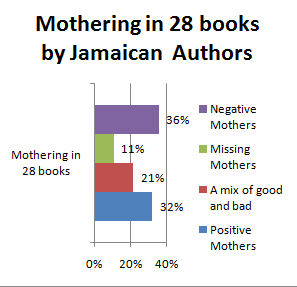
There are three autobiographies in my mothering list, two are autobiographies by cricketers, and these two are overwhelmingly in praise of motherhood. In Whispering Death, Michael Holding gives kudos to his parents, individually and together, for his upbringing. He credits his mother for her role in his nurturing of the game of cricket and as a young adult. He emphasizes in his book that the Holding Pavilion at the Melbourne Cricket Club, Kingston includes his parents, and is not named in his individual honour.
Christopher Gayle, whose autobiography "Six Machine: I don't Like Cricket, I Love It" gives credit to his parents as nurturers and unwavering sources of love. His mother is a hero in his life then and also now, and he absolutely delights in her.
"Lives of a Soul" is an autobiography but it reads like fantastic fiction. Throughout this book, mothers are either rescuers and revered figures, or negligent and incapable persons. Both exist in this writer's view as real forces for good and evil in the world.
The Happiness Dress and Abigail's Glorious Hair by Diane Browne are both children's books, and mothers play a role in self-perception. Abigail's best times are when her hair is being combed by her mother. It reinforces love and gives her a feeling of being nurtured. British born Carolyn's colourful handmade dress from Jamaica is looked down upon by her mother and grandmother who live with her in the UK. It is other British people who admire her Happiness Dress: a direct caution by Browne to persons who love Jamaica, but who discount traditions that have defined Jamaica as a motherland.
I have observed the role of mothers in three of the late Garfield Ellis' novels. From memory, as I have not re-read them recently, "For Nothing At All" and "Wake Rasta" tell of neglect by mothers who took their eyes off their children, allowing them to be carried away into the unsavoury sides of life's experiences. The neglect extends into the community as there are weak support systems to promote integrity, but strong systems for honour among thieves. The third book by Ellis, "Such As I Have" seems to have been a foresight of his own life. This is another book centred around the game of cricket and the mother is the sole support for a young woman who has a lot on her mind. The mother is crucial for this story of devotion and acceptance that Ellis wanted to tell.
The fantasy books on my list are YA books. Susan Francis Browne's "The Mermaid Escapade" is a children's heroic adventure, and the prominent central figure for them is the wise River Mumma, a queen mother. River Mumma as a mythical queen is also in the "Delroy in the Marog Kingdom" by Billy Elm.
The reflection on childhood "All Over Again" by AdZiko Simba Gegele is nostalgic, of a beautiful past epoch. This theme of loving, united parenting is also the theme in the book "No Boy Like Amanda" by Hope Barnett. In both books, the two-parent, single household family is secure in its existence and the village helps to raise the children.
"The Dixons" by Claudette Beckford Brady slips slightly away from this by introducing the proverbial snake in the garden. The Dixon family has a wise and loving mother and hardworking and loving father, and they are the rescuers of a girl who is floundering because of negligent parents, particularly a negligent mother.
Michelle Thompson's "A Way To Escape" is the triumph of the hard working mother over a failed marriage and working class situation. Rose is the quintessential mother who overcomes hardships through grit and prayer, keeps her children together, and then successfully escapes from Jamaica to Canada.
Escape is the sub-text of Pamella K Marshall's Barrel Children series. In "Breaking The Cycle" two individuals who grew up in Jamaica as barrel children and were raised by conscientious relatives, migrated, got married to each other, yet continually struggle through feelings of abandonment, fear and shame. The girl who becomes wife and mother bears the heavier burden as she is the one who offers the forgiveness that keeps the marriage together. She makes mistakes right through the book, but the author gives her an additional pass, as she has developed a mental disorder. Both characters struggle through the book to overcome the childhood pain of having been left behind by mothers who escaped from Jamaica.
The hapless fate of the motherless child who is hurt by life is well explored in "Mr King's Daughter", "Turn Back Blow", "The Last Warner Woman", and "The Mountain of Inheritance"."Mr King's Daughter", by Hazel Campbell, features a girl who is being raised by her single father who dotes on her. She makes decisions that cause her to enter into worries which are resolved with the love of a good man. She would have avoided those worries if she had a solid female parent is perhaps the unwritten message. I may be writing in things that Campbell never intended.
The hilarious "Turn Back Blow" by Roger Williams features the boy Clifton who has conversations with animals, and who is suffering because he has no parents and is living with an abusive uncle who is also involved in crime. The protection and nurturing of the boy is provided by his animal friends and also another child.
Kei Miller's "The Last Warner Woman" features Adamine Bustamante whose mother died, leaving her to be raised by an elderly woman who works in a leper colony, in other words, in an extremely marginalised society. It is hardly surprising then that the naive Bustamante is vulnerable to the vagaries of Jamaican society and then the wider world.
I have recounted nine books where the mother is a force for good; Whispering Death, Six Machine, Abigail's Glorious Hair, Such As I Have, Mermaid Escapade, All Over Again, No Boy Like Amanda, A Way to Escape; Delroy in the Marog Kingdom.
The following six books have examples of good counterbalanced with bad or inept mothering: White Teeth, Lives of A Soul, For Nothing At All, Wake Rasta, The Dixons, Breaking The Cycle.
Missing mothers whose children are being nurtured by others are in three books, Mr King's Daughter, Turn Back Blow and Last Warner Woman.
The remaining ten books are not a positive reflection on mothering. As mentioned before, The Happiness Dress, is a criticism of members of the diaspora who disparage Jamaican traditions because they are not trendy.
Carol Dunn's family saga, "The Mountain of Inheritance" actually has several mother themes. It starts with a girl who is placed into sexual slavery by her mother, and then later marries a widower with two small children. The mother of those children was doomed to a life of grief, even if she had lived, as she became a mother by sexually entrapping an unsuspecting student cleric. What does she who has never been mothered, know about mothering? This is not the sum total of the book, but essential to the plot and themes.
Diana Macaulay's "Gone To Drift" the boy Lloyd's sole role model is his impoverished grandfather who has disappeared. His mother is the consort of a criminal and she also does not care for her son.
Coleen Dennis-Smith details traits of these unready mothers in "Generation Curse" and For Her Son""Generation Curse" is one of the most disliked books, I believe, based on reactions that I have seen. I loved the book's metaphors, imagery, characters and plot development. I do have sympathy for readers for being disgusted by the storyline of a poor, pious, rural grandmother who does not complain about raising the ten grandchildren who her children have left on her without any support. Although she lives an upright lifestyle and is kind to her grandchildren, one after another the children come to grief, and their parents do not care. One of the woman's daughters lives nearby and works steadily and helps her mother while raising her children within a marital home. "For Her Son" , also by Smith-Dennis, is the rare book whose characters have a wealthy background, but the mothering is no less terrible. In this book, the child is at risk of ruin because of an overly indulgent mother.
Two generations of women are considered Nicole Dennis-Benn's "Here Comes the Sun" where a mother sacrifices the elder daughter so that the younger can have a better life. The elder daughter accepts her role, and she sees prostitution as justifiable work.
Melanie Schwapp's "Dew Angels" features a girl who is mistreated by her parents because of her skin colour, and the blame is placed on the customs of the wider society, as her mother is not strong enough to resist the culture. The woman who displays care for the suffering protagonist dies gruesomely for her efforts.
Colour again plays a role in "Dancing Lessons" by Olive Senior. Gertrude, an elderly woman, comes to her moment of reckoning and she traces her own motherless status as a dark skinned orphan in a family of light skinned relatives as being the root of her trials in childhood and her decisions in adulthood. She also notes that the years of fighting between her and her estranged husband negatively affected her relationship with her their children, and they ended up loving him more than her. As far as Gertrude was concerned, she was a hardworking, long suffering black woman to whom fate had dealt an unfair hand.
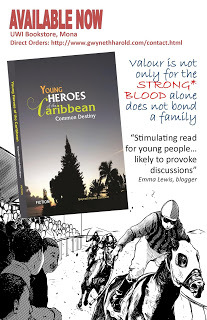
Then my own books, Bad Girls in School and Young Heroes of the Caribbean. In both, I believe that I wanted to show that very close communication with children is an important part of caring for them. In Bad Girls, Taj is a barrel child whose grandmother is a bit too busy for her; Katreena's mother is focused on her career as a policewoman, and Caledonia's parents are oblivious of her needs and the risks that they have unwittingly exposed her to. None of the girls were saved by their parents, the school became the parent.
Young Heroes of the Caribbean finds a boy at the crossroads of a loving but inept mother and an ambitious father. Father wins the day, and his mother has to start a journey to develop herself into a stronger individual who has personal aspirations and who can be a capable parent for her child. Along the way, she fosters a girl and relearns parenting.
At this point after my read of 28 books that I have shelved as featuring mothering as a strong theme and that were published within the last 30 years: about 11% of the books have children with no mothers; 21% of the mothers are inept at mothering or others act as surrogate mothers; 29% of the books are odes to good mothers; and 36% are severely critical of mothers. Mothering is not the only theme in these works, I have just found the theme to be oft mentioned.
I have watched three stage plays in the last two years. One was Rosie Murray's One Woman Play "A Slice Of Life" and the other was "Tek Yu Han Offa Mi" by Michael Dawson starring Murray. In that play the protagonist was encouraged into an immoral and violent romantic relationship by her own mother.
The third play was "Pressure Drop" by Basil Dawkins. It is about the turning point in the life of a family and two mothers influence the plot, one mother is dead and the other is alive.
The memory of the angelic dearly departed wife of a simple farmer and mother of his educated, but weak-willed son, is written into the script through their words. We feel her as a source of stability, conscience, assurance and immortal love in their lives.
The living mother, Dotsy, brilliantly played by Ruth Ho-Shing, whose daughter is played by Maylynne Lowe, is demented, but her true racist and dishonest nature, has influenced the family just as much. She has ostracised her son-in-law and daughter, contributed to her daughter's alcoholism, and through ruthless business practices, damaged prospects of other families in the community. Of this, she regrets nothing.
Is this a word from our writers to our society?
PART 2
In this second part of the article, I will include statements on the gender of the writers of the books that I have chosen. This is a selection of only 28 books out of the potentially hundreds of books that would have been authored by Jamaican authors. It would not be unfair to say that this new activity to separate by gender will denounce the whole exercise as meaningless as the results would be statistically insignificant. My reviews will also be influenced by my own views and my memory, as some of these books were read some time ago. I read White Teeth about 20 years ago.
In defence of my activity, I will say that the books that I have chosen include those that were on the Jamaica Library Service National Book Reading Competition between 2016 and 2018, and so would have been recently published books that were widely available in the marketplace and vetted to be of a high enough quality for their competition.
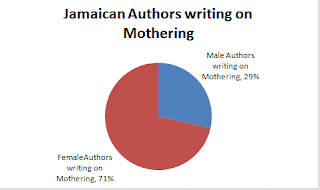
.Of the 28 books selected, 10 were authored by women, and eight by men, which is a 71% female to 29% male ratio. It would be good to know who is doing most of the writing in Jamaica, my own reading experience is that it is mostly women.
The six male writers across eight books had no negative views of mothering in their books, that I can recall, whereas 50% of the books authored by the 17 women writers across 20 books had characters who displayed negative mothering behaviour. This ranged from neglect to, deliberately corrupting their children.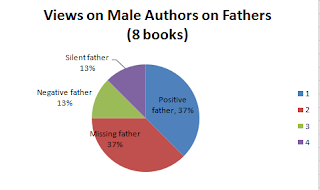 The female writers had a 60% incidence of positive fathering whereas the male writers were definitely lukewarm at 37%.For 25% of the books, authored by men, mothers were missing; and 37% of the time the fathers were missing.For women authors, 15% of the books were silent on fathers but in 5% mothers were missing.
The female writers had a 60% incidence of positive fathering whereas the male writers were definitely lukewarm at 37%.For 25% of the books, authored by men, mothers were missing; and 37% of the time the fathers were missing.For women authors, 15% of the books were silent on fathers but in 5% mothers were missing.
Of my list, there were several other books that I have read, but perhaps I did not think that the theme of mothering was evident, but perhaps over time I may change this view.
Some of these books are:
"A Brief History of Seven Killings" by Marlon James
"From Harvey River" by Lorna Goodison
"The Same Earth" by Kei Miller and the memoirs "Flame of the Forest, Memoirs of Church Teachers College" by St Hope Earl McKenzie and Rachel Manley's Drumblair Series "Memories of a Jamaican Childhood" and "Slipstream".
END
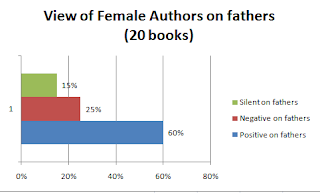
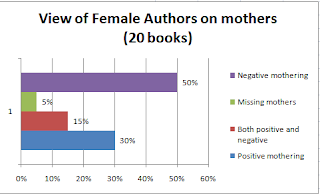
My Jamaican Mothers bookshelf is here:https://www.goodreads.com/review/list...
END
The Books
White Teeth - Whispering Death - Six Machine - Abigail's Glorious Hair - The Happiness Dress - Such As I have - The Mermaid Escapade - Delroy in the Marog Kingdom -All Over Again - No Boy Like Amanda - A Way To Escape - Lives of a Soul - For Nothing At All - Wake Rasta - The Dixons - Breaking the Cycle - Mr King's Daughter - Turn Back Blow - Last Warner Woman - Mountain of Inheritance - Gone To Drift - Generation Curse - For her Son - Here Comes Dew Angels - Dancing Lessons - Bad Girls - Young Heroes of the Caribbean - END
 In 2016, I drafted an article about the theme of mothering in Jamaican novels published after 2000 that I have read. It was not a good look for Jamaican mothers, and I deleted the article. I had had the sense of failures in mothering as a theme in novels for a few years, but this was emphasized when I became a reader for the Jamaica Library Service National Book Reading Competition in that year.
In 2016, I drafted an article about the theme of mothering in Jamaican novels published after 2000 that I have read. It was not a good look for Jamaican mothers, and I deleted the article. I had had the sense of failures in mothering as a theme in novels for a few years, but this was emphasized when I became a reader for the Jamaica Library Service National Book Reading Competition in that year.This is my third year of intensely reading books written by Jamaican authors, and the impact of mothering on plot development, is important to the themes that I encounter, so I am braving the matter again.
Perhaps the best-known Caribbean work on mothers and daughters is Annie John by the Antiguan writer, Jamaica Kincaid. The writing is a sustained caustic burn of a young woman's feeling of abuse from her mother's parenting. In this case, the abuse is criticism accompanied by the author's belief that her mother had withdrawn her love from her. The book is followed up by other Kincaid novels where failure in mothering is a dominant theme. Some may also extend mother to the country of her birth, as the novel "A Small Place" is acerbic about the political and social leadership of Kincaid's island home.On my Goodreads shelf, I have listed 70 books by Jamaican authors. From that list I have 28 books marked "Jamaican Mothers"These are novels and autobiographies that were published after 1990 where mothering is a substantial theme. Aside from the novel "White Teeth", which was authored by Zaidie Smith, all of the other authors were born and raised in Jamaica. Smith is a British woman born to a Jamaican mother and English father.
In "White Teeth", a major character, Irie, is a second generation British Jamaican, her mother is notable in that she has no teeth. This is just one way that we know that Irie's mother tries, but does not succeed in raising her daughter to excel in British society. Irie's grandmother, who was born in Jamaica, becomes a very important mentor for Irie, and Irie later wants to become a dentist, probably as a way to continually save her mother and earlier female antecedents.

There are three autobiographies in my mothering list, two are autobiographies by cricketers, and these two are overwhelmingly in praise of motherhood. In Whispering Death, Michael Holding gives kudos to his parents, individually and together, for his upbringing. He credits his mother for her role in his nurturing of the game of cricket and as a young adult. He emphasizes in his book that the Holding Pavilion at the Melbourne Cricket Club, Kingston includes his parents, and is not named in his individual honour.
Christopher Gayle, whose autobiography "Six Machine: I don't Like Cricket, I Love It" gives credit to his parents as nurturers and unwavering sources of love. His mother is a hero in his life then and also now, and he absolutely delights in her.
"Lives of a Soul" is an autobiography but it reads like fantastic fiction. Throughout this book, mothers are either rescuers and revered figures, or negligent and incapable persons. Both exist in this writer's view as real forces for good and evil in the world.
The Happiness Dress and Abigail's Glorious Hair by Diane Browne are both children's books, and mothers play a role in self-perception. Abigail's best times are when her hair is being combed by her mother. It reinforces love and gives her a feeling of being nurtured. British born Carolyn's colourful handmade dress from Jamaica is looked down upon by her mother and grandmother who live with her in the UK. It is other British people who admire her Happiness Dress: a direct caution by Browne to persons who love Jamaica, but who discount traditions that have defined Jamaica as a motherland.
I have observed the role of mothers in three of the late Garfield Ellis' novels. From memory, as I have not re-read them recently, "For Nothing At All" and "Wake Rasta" tell of neglect by mothers who took their eyes off their children, allowing them to be carried away into the unsavoury sides of life's experiences. The neglect extends into the community as there are weak support systems to promote integrity, but strong systems for honour among thieves. The third book by Ellis, "Such As I Have" seems to have been a foresight of his own life. This is another book centred around the game of cricket and the mother is the sole support for a young woman who has a lot on her mind. The mother is crucial for this story of devotion and acceptance that Ellis wanted to tell.
The fantasy books on my list are YA books. Susan Francis Browne's "The Mermaid Escapade" is a children's heroic adventure, and the prominent central figure for them is the wise River Mumma, a queen mother. River Mumma as a mythical queen is also in the "Delroy in the Marog Kingdom" by Billy Elm.
The reflection on childhood "All Over Again" by AdZiko Simba Gegele is nostalgic, of a beautiful past epoch. This theme of loving, united parenting is also the theme in the book "No Boy Like Amanda" by Hope Barnett. In both books, the two-parent, single household family is secure in its existence and the village helps to raise the children.
"The Dixons" by Claudette Beckford Brady slips slightly away from this by introducing the proverbial snake in the garden. The Dixon family has a wise and loving mother and hardworking and loving father, and they are the rescuers of a girl who is floundering because of negligent parents, particularly a negligent mother.
Michelle Thompson's "A Way To Escape" is the triumph of the hard working mother over a failed marriage and working class situation. Rose is the quintessential mother who overcomes hardships through grit and prayer, keeps her children together, and then successfully escapes from Jamaica to Canada.
Escape is the sub-text of Pamella K Marshall's Barrel Children series. In "Breaking The Cycle" two individuals who grew up in Jamaica as barrel children and were raised by conscientious relatives, migrated, got married to each other, yet continually struggle through feelings of abandonment, fear and shame. The girl who becomes wife and mother bears the heavier burden as she is the one who offers the forgiveness that keeps the marriage together. She makes mistakes right through the book, but the author gives her an additional pass, as she has developed a mental disorder. Both characters struggle through the book to overcome the childhood pain of having been left behind by mothers who escaped from Jamaica.
The hapless fate of the motherless child who is hurt by life is well explored in "Mr King's Daughter", "Turn Back Blow", "The Last Warner Woman", and "The Mountain of Inheritance"."Mr King's Daughter", by Hazel Campbell, features a girl who is being raised by her single father who dotes on her. She makes decisions that cause her to enter into worries which are resolved with the love of a good man. She would have avoided those worries if she had a solid female parent is perhaps the unwritten message. I may be writing in things that Campbell never intended.
The hilarious "Turn Back Blow" by Roger Williams features the boy Clifton who has conversations with animals, and who is suffering because he has no parents and is living with an abusive uncle who is also involved in crime. The protection and nurturing of the boy is provided by his animal friends and also another child.
Kei Miller's "The Last Warner Woman" features Adamine Bustamante whose mother died, leaving her to be raised by an elderly woman who works in a leper colony, in other words, in an extremely marginalised society. It is hardly surprising then that the naive Bustamante is vulnerable to the vagaries of Jamaican society and then the wider world.
I have recounted nine books where the mother is a force for good; Whispering Death, Six Machine, Abigail's Glorious Hair, Such As I Have, Mermaid Escapade, All Over Again, No Boy Like Amanda, A Way to Escape; Delroy in the Marog Kingdom.
The following six books have examples of good counterbalanced with bad or inept mothering: White Teeth, Lives of A Soul, For Nothing At All, Wake Rasta, The Dixons, Breaking The Cycle.
Missing mothers whose children are being nurtured by others are in three books, Mr King's Daughter, Turn Back Blow and Last Warner Woman.
The remaining ten books are not a positive reflection on mothering. As mentioned before, The Happiness Dress, is a criticism of members of the diaspora who disparage Jamaican traditions because they are not trendy.
Carol Dunn's family saga, "The Mountain of Inheritance" actually has several mother themes. It starts with a girl who is placed into sexual slavery by her mother, and then later marries a widower with two small children. The mother of those children was doomed to a life of grief, even if she had lived, as she became a mother by sexually entrapping an unsuspecting student cleric. What does she who has never been mothered, know about mothering? This is not the sum total of the book, but essential to the plot and themes.
Diana Macaulay's "Gone To Drift" the boy Lloyd's sole role model is his impoverished grandfather who has disappeared. His mother is the consort of a criminal and she also does not care for her son.
Coleen Dennis-Smith details traits of these unready mothers in "Generation Curse" and For Her Son""Generation Curse" is one of the most disliked books, I believe, based on reactions that I have seen. I loved the book's metaphors, imagery, characters and plot development. I do have sympathy for readers for being disgusted by the storyline of a poor, pious, rural grandmother who does not complain about raising the ten grandchildren who her children have left on her without any support. Although she lives an upright lifestyle and is kind to her grandchildren, one after another the children come to grief, and their parents do not care. One of the woman's daughters lives nearby and works steadily and helps her mother while raising her children within a marital home. "For Her Son" , also by Smith-Dennis, is the rare book whose characters have a wealthy background, but the mothering is no less terrible. In this book, the child is at risk of ruin because of an overly indulgent mother.
Two generations of women are considered Nicole Dennis-Benn's "Here Comes the Sun" where a mother sacrifices the elder daughter so that the younger can have a better life. The elder daughter accepts her role, and she sees prostitution as justifiable work.
Melanie Schwapp's "Dew Angels" features a girl who is mistreated by her parents because of her skin colour, and the blame is placed on the customs of the wider society, as her mother is not strong enough to resist the culture. The woman who displays care for the suffering protagonist dies gruesomely for her efforts.
Colour again plays a role in "Dancing Lessons" by Olive Senior. Gertrude, an elderly woman, comes to her moment of reckoning and she traces her own motherless status as a dark skinned orphan in a family of light skinned relatives as being the root of her trials in childhood and her decisions in adulthood. She also notes that the years of fighting between her and her estranged husband negatively affected her relationship with her their children, and they ended up loving him more than her. As far as Gertrude was concerned, she was a hardworking, long suffering black woman to whom fate had dealt an unfair hand.

Then my own books, Bad Girls in School and Young Heroes of the Caribbean. In both, I believe that I wanted to show that very close communication with children is an important part of caring for them. In Bad Girls, Taj is a barrel child whose grandmother is a bit too busy for her; Katreena's mother is focused on her career as a policewoman, and Caledonia's parents are oblivious of her needs and the risks that they have unwittingly exposed her to. None of the girls were saved by their parents, the school became the parent.
Young Heroes of the Caribbean finds a boy at the crossroads of a loving but inept mother and an ambitious father. Father wins the day, and his mother has to start a journey to develop herself into a stronger individual who has personal aspirations and who can be a capable parent for her child. Along the way, she fosters a girl and relearns parenting.
At this point after my read of 28 books that I have shelved as featuring mothering as a strong theme and that were published within the last 30 years: about 11% of the books have children with no mothers; 21% of the mothers are inept at mothering or others act as surrogate mothers; 29% of the books are odes to good mothers; and 36% are severely critical of mothers. Mothering is not the only theme in these works, I have just found the theme to be oft mentioned.
I have watched three stage plays in the last two years. One was Rosie Murray's One Woman Play "A Slice Of Life" and the other was "Tek Yu Han Offa Mi" by Michael Dawson starring Murray. In that play the protagonist was encouraged into an immoral and violent romantic relationship by her own mother.
The third play was "Pressure Drop" by Basil Dawkins. It is about the turning point in the life of a family and two mothers influence the plot, one mother is dead and the other is alive.
The memory of the angelic dearly departed wife of a simple farmer and mother of his educated, but weak-willed son, is written into the script through their words. We feel her as a source of stability, conscience, assurance and immortal love in their lives.
The living mother, Dotsy, brilliantly played by Ruth Ho-Shing, whose daughter is played by Maylynne Lowe, is demented, but her true racist and dishonest nature, has influenced the family just as much. She has ostracised her son-in-law and daughter, contributed to her daughter's alcoholism, and through ruthless business practices, damaged prospects of other families in the community. Of this, she regrets nothing.
Is this a word from our writers to our society?
PART 2
In this second part of the article, I will include statements on the gender of the writers of the books that I have chosen. This is a selection of only 28 books out of the potentially hundreds of books that would have been authored by Jamaican authors. It would not be unfair to say that this new activity to separate by gender will denounce the whole exercise as meaningless as the results would be statistically insignificant. My reviews will also be influenced by my own views and my memory, as some of these books were read some time ago. I read White Teeth about 20 years ago.
In defence of my activity, I will say that the books that I have chosen include those that were on the Jamaica Library Service National Book Reading Competition between 2016 and 2018, and so would have been recently published books that were widely available in the marketplace and vetted to be of a high enough quality for their competition.

.Of the 28 books selected, 10 were authored by women, and eight by men, which is a 71% female to 29% male ratio. It would be good to know who is doing most of the writing in Jamaica, my own reading experience is that it is mostly women.
The six male writers across eight books had no negative views of mothering in their books, that I can recall, whereas 50% of the books authored by the 17 women writers across 20 books had characters who displayed negative mothering behaviour. This ranged from neglect to, deliberately corrupting their children.
 The female writers had a 60% incidence of positive fathering whereas the male writers were definitely lukewarm at 37%.For 25% of the books, authored by men, mothers were missing; and 37% of the time the fathers were missing.For women authors, 15% of the books were silent on fathers but in 5% mothers were missing.
The female writers had a 60% incidence of positive fathering whereas the male writers were definitely lukewarm at 37%.For 25% of the books, authored by men, mothers were missing; and 37% of the time the fathers were missing.For women authors, 15% of the books were silent on fathers but in 5% mothers were missing.Of my list, there were several other books that I have read, but perhaps I did not think that the theme of mothering was evident, but perhaps over time I may change this view.
Some of these books are:
"A Brief History of Seven Killings" by Marlon James
"From Harvey River" by Lorna Goodison
"The Same Earth" by Kei Miller and the memoirs "Flame of the Forest, Memoirs of Church Teachers College" by St Hope Earl McKenzie and Rachel Manley's Drumblair Series "Memories of a Jamaican Childhood" and "Slipstream".
END


My Jamaican Mothers bookshelf is here:https://www.goodreads.com/review/list...
END
The Books
White Teeth - Whispering Death - Six Machine - Abigail's Glorious Hair - The Happiness Dress - Such As I have - The Mermaid Escapade - Delroy in the Marog Kingdom -All Over Again - No Boy Like Amanda - A Way To Escape - Lives of a Soul - For Nothing At All - Wake Rasta - The Dixons - Breaking the Cycle - Mr King's Daughter - Turn Back Blow - Last Warner Woman - Mountain of Inheritance - Gone To Drift - Generation Curse - For her Son - Here Comes Dew Angels - Dancing Lessons - Bad Girls - Young Heroes of the Caribbean - END
Published on July 26, 2018 13:52
April 21, 2018
Jamaican Romance
A 14-part playlist of Jamaican Romance slideshows from real life and fiction.
https://www.facebook.com/772524162815...
Published on April 21, 2018 06:31
April 1, 2018
Harbour Street and the Birthing of Jamaican Cuisine
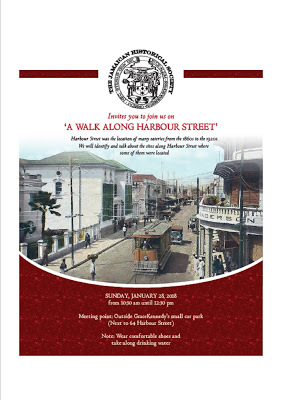
DRAFT -Harbour Street and the Birthing of Jamaican CuisineThe birth of Jamaican cuisine could have been the title of the trip A Walk Along Harbour Street that the Jamaican Historical Society hosted on January 28, 2018 along Harbour Street in Kingston.
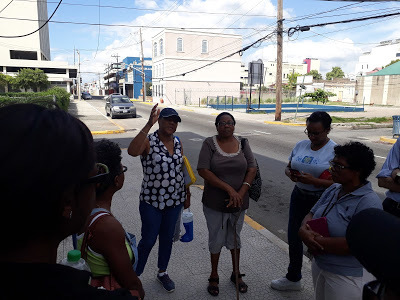 Charmaine McKenzie gives the group an orientation. At far right is a member of the Parade Garden's Benevolent Society.The tour was led by food historian and past president of the Jamaica Historical Society, Charmaine McKenzie, accompanied by Professor James Robertson of the UWI, Mona History and Archaeology department. Archaeologist at the Jamaica National Heritage Trust, Audene Brooks, was also on the walk. As we went along, residents of Parade Gardens Community Benevolent Society came out, attired in their logo gear; their participation added to the knowledge learned about the area. The community is an agency that has been the recipient of development projects through the Planning Institute of Jamaica's Community Renewal Programme (CRP).
Charmaine McKenzie gives the group an orientation. At far right is a member of the Parade Garden's Benevolent Society.The tour was led by food historian and past president of the Jamaica Historical Society, Charmaine McKenzie, accompanied by Professor James Robertson of the UWI, Mona History and Archaeology department. Archaeologist at the Jamaica National Heritage Trust, Audene Brooks, was also on the walk. As we went along, residents of Parade Gardens Community Benevolent Society came out, attired in their logo gear; their participation added to the knowledge learned about the area. The community is an agency that has been the recipient of development projects through the Planning Institute of Jamaica's Community Renewal Programme (CRP).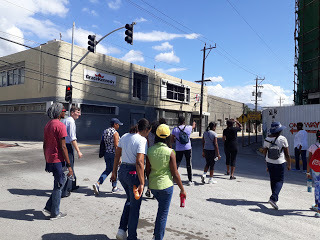 GraceKennedy grew out of the mercantile culture on Harbour StreetMs McKenzie set the tone by allowing us to paint a mental picture of Harbour Street in the late 1860s. Under her direction, the smooth concrete wall of Ocean Boulevard melted away and brought 1.5 Km of shoreline right up to Harbour Street, from where hundreds of narrow finger piers jutted out into the water, for the length of the street. This was the time when the age of sail was giving way to the age of steam. Sailboats from as far West as Belize would be anchored around the new merchant and military steamboats from the USA and UK. Kingston was Britain's major trading post for the Western Atlantic.
GraceKennedy grew out of the mercantile culture on Harbour StreetMs McKenzie set the tone by allowing us to paint a mental picture of Harbour Street in the late 1860s. Under her direction, the smooth concrete wall of Ocean Boulevard melted away and brought 1.5 Km of shoreline right up to Harbour Street, from where hundreds of narrow finger piers jutted out into the water, for the length of the street. This was the time when the age of sail was giving way to the age of steam. Sailboats from as far West as Belize would be anchored around the new merchant and military steamboats from the USA and UK. Kingston was Britain's major trading post for the Western Atlantic.Not said on the tour, but a visit to the Flamstead historical point in St Andrew shows that in 1863, during the USA Civil War, a confederate ship had been provisioned in Kingston Harbour, an unfriendly act, as the UK had ties to the USA government.
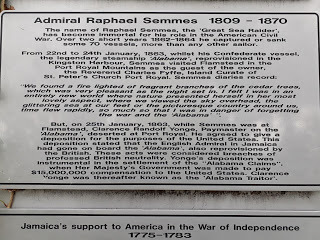 Plaque at Flamstead outlining the breach by
Plaque at Flamstead outlining the breach by UK Navy of USA relations over provisions (food and water).
Seamen wanted...needed...refreshment, and eateries on Harbour Street opened, closed and changed hands frequently. It seemed to have been difficult to be profitable in this business.
There were two main kinds of eateries. The public table and the dining room. In both examples there was a table d'hote, a daily menu that was prepared for patrons. The concept of a restaurant had not yet arrived in Kingston.
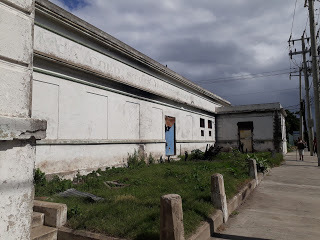 A former dairy establishment that would have had a cold room
A former dairy establishment that would have had a cold roomthat may have offered storage to food shopsThe public table was a cookshop where anyone could order and sit to eat their meal; the dining rooms were in private clubs that were open to members or offered to certain visitors.
The menus of both were plain European style food, such as cuts of stewed meat, but by the 1870s the records show that the item rich creole soups and stews was being celebrated and served in some establishments. Also, local bakers had got the hang of baking different kinds of items and were offering their own local versions. Naturally, having an abundance of sugar cane products and locally grown spices the creole dishes gradually gained notice.
Ms McKenzie has viewed the manifests of ships that came into Kingston Harbour and noted that there was a high degree of consumer goods at that time and long before. Among the goods was a lot of food stuff, ale, wine and spirits that continually flowed into Jamaica, and that would have been offered at the eateries on and around Harbour Street.
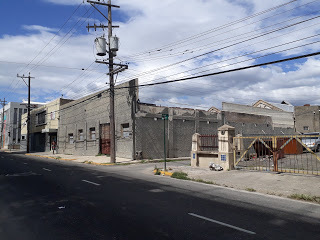 A former cold storage operator on Harbour StreetImportant to the eateries was the preservation of food such as meat and vegetables. During this period, businesses that ran cold rooms had ongoing arrangements to store food overnight for cookshops. These included meat, milk and vegetables.
A former cold storage operator on Harbour StreetImportant to the eateries was the preservation of food such as meat and vegetables. During this period, businesses that ran cold rooms had ongoing arrangements to store food overnight for cookshops. These included meat, milk and vegetables.During this period, the eateries were owned by Europeans and some Middle-Easterners, but the cooks and other workers were Jamaicans, and increasingly, so were the patrons.
McKenzie's walk pointed out the location of some public tables. Mrs McDougall ran respectable rooms and a public table where the Air Jamaica building now stands. She made the newspapers when she foiled spies in the destruction of a Haitian General's papers, using her own guns!
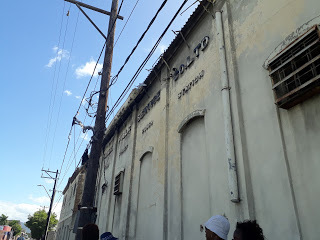 Gold Street power companyAt another point on the walk, the owner did not last long on Harbour Street and later advertised nearer to the Parade and then even further North, where presumably, rent was cheaper. He eventually went out of business, as the location to be in this volatile business at that time, was Harbour Street.
Gold Street power companyAt another point on the walk, the owner did not last long on Harbour Street and later advertised nearer to the Parade and then even further North, where presumably, rent was cheaper. He eventually went out of business, as the location to be in this volatile business at that time, was Harbour Street.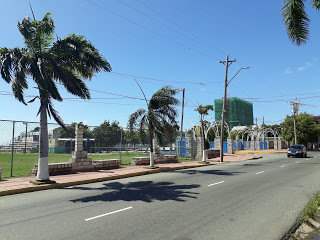 Public building going up on the former Myrtle Bank Hotel property where there was a dining room for members only.The public tables were dynamic places, as anyone could sit there, and there were frequent culture clashes. There is a newspaper account of a court case where a seaman had delivered racial slurs to a Black Jamaican. The ending of that story was not given on the walk, but the courtroom, which was also on Harbour Street, was packed on the day that the matter was heard.
Public building going up on the former Myrtle Bank Hotel property where there was a dining room for members only.The public tables were dynamic places, as anyone could sit there, and there were frequent culture clashes. There is a newspaper account of a court case where a seaman had delivered racial slurs to a Black Jamaican. The ending of that story was not given on the walk, but the courtroom, which was also on Harbour Street, was packed on the day that the matter was heard.When the tour passed High Holborn Street, the group observed the rail lines that still rise above worn asphalt. Across the road the towers that will house a new government building and also GraceKennedy are rising. The older residents of Parade Gardens and also archaeologist Brooks spoke about the fresh water well that is within the boundaries of the Myrtle Beach Hotel, now to be a public building. The group hoped that the new develop will preserve and celebrate this well that had served seamen from the days of the Tainos.
 The new home of GraceKennedy now under construction.The era that was discussed by Ms McKenzie ended just before the Kingston earthquake of 1907, which caused so much destruction that it changed the buildings of the city forever, but the business of the harbour continued, and with that, refreshment for seamen.
The new home of GraceKennedy now under construction.The era that was discussed by Ms McKenzie ended just before the Kingston earthquake of 1907, which caused so much destruction that it changed the buildings of the city forever, but the business of the harbour continued, and with that, refreshment for seamen.
Published on April 01, 2018 23:29
January 20, 2018
The Archipelagaic Kingdom of Jamaica
The Archipelagaic Kingdom of Jamaica
Jamaica creates 21st century dynasty
#FakeFun
Kingdom of Jamaica on Biteable.
Jamaica creates 21st century dynasty
#FakeFun
Kingdom of Jamaica on Biteable.
Published on January 20, 2018 05:10
January 12, 2018
Stories inspired by Jamaica 1655 - 1661
These videos are for my personal, non commercial use and intended to amplify a storyline inspired by the history of Jamaica. I do not own the photos used and did not get permission to use them.
Creating the Coat of Arms of Jamaica 1 on Biteable.
The administrator and the entrepreneur on Biteable.
They were brothers on Biteable.
Esquivel and Bartolomo on Biteable.
Slideshow 1 on Biteable.
Never Broken Down - 2 on Biteable.
Creating the Coat of Arms of Jamaica 1 on Biteable.
The administrator and the entrepreneur on Biteable.
They were brothers on Biteable.
Esquivel and Bartolomo on Biteable.
Slideshow 1 on Biteable.
Never Broken Down - 2 on Biteable.
Published on January 12, 2018 17:46
January 2, 2018
Fight or Make Do?
Fight or Make Do?
The administrator and the entrepreneur on Biteable.
Having read extended first account dispatches and commentary of the period of history of Jamaica 1509 to 1692, I ask of myself what I should make of it and if the times call for me to take any action.
The most hurtful part of the new information, for me, is the acceptance of a 7% agent commission by governors of the island to handle business on behalf of the company that had a licensed monopoly on the trade of enslaved persons. With that structure in place, the society could not possibly have matured from rampant adventurism to civilization. Indeed, the enslaved persons had no choice but to fight it out or adapt and make the system work for them. I am grateful, and humbled, that many chose the more honourable route of fighting.
For those who did not fight, but chose to use other means to survive and thrive within the context that they found themselves in, they helped to build society that somehow, progressed and has made a positive contribution to the progress of humanity. I hesitate to apply judgement on them
Slideshow 1 on Biteable.
Characters with their birth years and nationalities------------------------------
From circa 600AD to 1662 The Tainos living on Jamaica for more than 1,000 years1470 Juan de Esquivel, Spanish conquistador
1484 Bartolome de las Casas, Spanish haciaenda owner
William Jackson, English, pirate
Cristobal Arnaldo de Ysassi, Spanish Jamaican administrator
Juan Lobolo, African Jamaican maroon chief
1617 Edward D'Oyley, English naval officer and administrator
Richard Guy, English naval officer, planter, politician
1633 Thomas Lynch, English naval officer, administrator, planter
1629 Charles Howard, English military officer and politician and landowner
1635 Henry Morgan, Welsh buccaneer, privateer, planter, politician, administrator
1636 William Beeston, English planter, mercantilist and administrator
1639 John Vaughn, English landowner, peer, administrator
1639 Hender Molesworth, English administrator, planter, mercantilist
Slideshow 1 on Biteable.
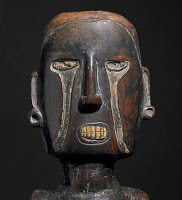 In 1509, Juan de Esquivel, a 39 year-old Spanish man living in Hispaniola was assigned administrative responsibility for the island of Santiago. The authorities wanted Esquivel off the island of Hispaniola, as the influential 28-year-old, Bartolome de las Casas, an owner of a hacienda worked by enslaved Taino people, reported him for his abominable cruelty against the Taino community.Esquivel had arrived as crew on the second voyage of Columbus and had readily engaged in atrocities against the Taino people that was encouraged by his boss Columbus.Esquivel had successfully established two settlements in Hispaniola, but the reports against him by Bartolome could not be ignored. Esquivel lasted four years as governor of Santiago, before he was again removed from office, but those four years left a long legacy.He founded the town of New Seville which was a stable and growing settlement for another 150 years; and a harbour on the south coast of the island bears his name. Through poetic justice, the island of Santiago reverted to a modernised version of its original Taino name and became Jamaica.Esquivel was removed from office in 1513, but remained on Jamaica for the rest of his life.
In 1509, Juan de Esquivel, a 39 year-old Spanish man living in Hispaniola was assigned administrative responsibility for the island of Santiago. The authorities wanted Esquivel off the island of Hispaniola, as the influential 28-year-old, Bartolome de las Casas, an owner of a hacienda worked by enslaved Taino people, reported him for his abominable cruelty against the Taino community.Esquivel had arrived as crew on the second voyage of Columbus and had readily engaged in atrocities against the Taino people that was encouraged by his boss Columbus.Esquivel had successfully established two settlements in Hispaniola, but the reports against him by Bartolome could not be ignored. Esquivel lasted four years as governor of Santiago, before he was again removed from office, but those four years left a long legacy.He founded the town of New Seville which was a stable and growing settlement for another 150 years; and a harbour on the south coast of the island bears his name. Through poetic justice, the island of Santiago reverted to a modernised version of its original Taino name and became Jamaica.Esquivel was removed from office in 1513, but remained on Jamaica for the rest of his life.
 Spain did little better than ignore the island for another 130 years. It was therefore ripe as a target, and William Jackson - who had a license from his government to pillage Spanish possessions in the Caribbean - scored easily on March 25, 1643.Jackson anchored in Kingston Harbour and his party of 500 men captured the south coast town of St Jago de la Vega. After the conflict was resolved, more than two score of Jackson's men decided to stay on, as they said Jamaica was a terrestrial paradise.
Spain did little better than ignore the island for another 130 years. It was therefore ripe as a target, and William Jackson - who had a license from his government to pillage Spanish possessions in the Caribbean - scored easily on March 25, 1643.Jackson anchored in Kingston Harbour and his party of 500 men captured the south coast town of St Jago de la Vega. After the conflict was resolved, more than two score of Jackson's men decided to stay on, as they said Jamaica was a terrestrial paradise.
Eleven years later, in 1655, a poorly organised military force of the revolutionary Commonwealth of England Scotland and Ireland, made a last ditch attempt to redeem their disastrous campaign to capture Hispaniola by going after the weakly defended Jamaica. They followed Jackson's game plan and captured St Jago de la Vega, then a town of 400 houses, some were armed. Boosted by the victory, the island was then quickly militarized by them.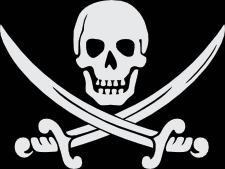 Combatants of that period whose exploits have had a lasting impact on Jamaica were: soldier Thomas Lynch who was in his early 20s; Edward D'Oyley, a naval officer in his 40s; Richard Guy, a military official; the maroon leader John Lobolo and the Spanish administrator Cristobal Arnaldo Ysassi (Isasi).
Combatants of that period whose exploits have had a lasting impact on Jamaica were: soldier Thomas Lynch who was in his early 20s; Edward D'Oyley, a naval officer in his 40s; Richard Guy, a military official; the maroon leader John Lobolo and the Spanish administrator Cristobal Arnaldo Ysassi (Isasi).
Soldier Thomas Lynch and buccaneer Henry Morgan were also involved in power struggles that caused them to face down each other over the ensuing 20 years.
Some historians say that Cristobal Arnaldo de Ysassi's family held the rights to the entire island of Jamaica, and he was determined not to lose his birthright. Largely through his personal efforts, over the course of three years he fixed himself the target of bringing the island back under Spanish control.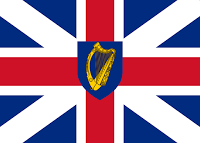 Important to his plans was the support of the maroon people who lived across three pelincos in the hinterlands of Jamaica. The maroons were Africans who had, through their own efforts, self liberated themselves from bondage, but Ysassi somehow believed that they were still sympathetic to the Spanish cause. Unknown to him, his ally - and a man who he described as key to his plans - Juan Lubolo, had been courted by a British military officer, Richard Guy, and had switched allegiances.After losing three pitched battles, and being attacked by both maroons and British, Ysassi last saw Jamaica in 1658 as he departed the north coast by canoe for Cuba. This born Jamaican then disappears from the public record. D'Oyley had met Ysassi's forces and defeated him at Ocho Rios 1657 and again at Rio Bueno in 1658.
Important to his plans was the support of the maroon people who lived across three pelincos in the hinterlands of Jamaica. The maroons were Africans who had, through their own efforts, self liberated themselves from bondage, but Ysassi somehow believed that they were still sympathetic to the Spanish cause. Unknown to him, his ally - and a man who he described as key to his plans - Juan Lubolo, had been courted by a British military officer, Richard Guy, and had switched allegiances.After losing three pitched battles, and being attacked by both maroons and British, Ysassi last saw Jamaica in 1658 as he departed the north coast by canoe for Cuba. This born Jamaican then disappears from the public record. D'Oyley had met Ysassi's forces and defeated him at Ocho Rios 1657 and again at Rio Bueno in 1658.
Of the other combatants of that time, Guy went on to become a moderately wealthy planter using enslaved labour, and was also a member of the House of Assembly. He married, and his grave can be seen in Guanaboa Vale.Lubolo's influence and leadership saw him being recognised as a Colonel by the authorities. A peace treaty was signed in 1660 between Lubolo and the governor, granting his palenco peace and privileges for ever. In 1664, however, he was ambushed and killed by another maroon group, but his leadership has been immortalised by the naming of the Juan de Bolas Mountains, the Juan de Bolas River and other place names in central Jamaica.
D'Oyley advanced professionally, and made the transition from being a fighting man to administrator. Between between 1657 and 1662, he was officially in charge of Jamaica. His actions defined the development of the society. He:
-Dispossessed the remaining groups of Taino people by transporting them to Central America;
-Invited the pirates in Tortuga to relocate their headquarters to Port Royal as a strategy to prevent other nations from taking Jamaica as a prize;
-Selected and appointed eleven military officers and one civilian to make up the first House of Assembly. At the end of his commission, he left Jamaica.
Thomas Lynch, the solder who was a part of the invading force of 1655, was chief of staff to D'Oyley. At about age 30, Lynch was appointed Deputy Governor from 1663 for one year. He was also Chief Justice and Provost (Chief Sheriff) of the island. In other words, he was the police and the judge.Lynch appointed a 24 year old Englishman, William Beeston, as his deputy and sent him on official negotiations with the Spanish for the return of British prisoners.
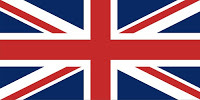 The politics of Britain changed. In 1660, the United Kingdom was formed and crown favourites were given appointments in colonies. Lynch gave way to a politician Edward Morgan who was Deputy Governor in 1664. Lynch did not have a good relationship with Morgan and he was charged with slander. At least one writer wonders if it was because Lynch wanted to marry a black woman. Morgan's daughter later married fellow Welshman, and the most powerful man in the Caribbean, Henry Morgan, and he left Jamaica, for a while.
The politics of Britain changed. In 1660, the United Kingdom was formed and crown favourites were given appointments in colonies. Lynch gave way to a politician Edward Morgan who was Deputy Governor in 1664. Lynch did not have a good relationship with Morgan and he was charged with slander. At least one writer wonders if it was because Lynch wanted to marry a black woman. Morgan's daughter later married fellow Welshman, and the most powerful man in the Caribbean, Henry Morgan, and he left Jamaica, for a while.
The first push to exploit the economic agricultural potential of Jamaica, using a system of enslaved labour, came with Thomas Modyford who, at age 42, was appointed Deputy Governor, arriving in 1664 with 700 planters and enslaved persons. This influx propelled the sugar cane plantation economy into exponential growth mode. Modyford was all about the money and granted privateering licenses, giving 1/10 to the crown and notoriously keeping 1/15th for himself. Lynch did not have a good working relationship with this boss and was relieved of his appointments. Not being a planter or merchant but a mere public employee, Lynch returned for a desk job in Britain.
Modyford's granting of a lucrative privateering license to Henry Morgan in January 1671, led to diplomatic grief for his country and the downfall of his career. Unknown to him, England and Spain had signed a peace treaty in June 1670, and Morgan's pillaging of Panama some months later was an affront to that agreement. Modyford lost his job and was imprisoned for a year.
Thomas Lynch was then knighted in 1670, married Vere Herbert, and appointed as the first Lt Governor of Jamaica. On his return, he continued the policy of issuing licenses to privateers for three years, 1671 to 1674. Henry Morgan was in Britain from 1672 to 1674, was never arrested, and his explanations for his actions were accepted.
In 1674, 36-year-old John Vaughn, a friend of the court, was appointed Lt Governor with the mandate to eradicate the business of privateerism. Concurrent with this, Henry Morgan received a knighthood and accompanied Vaughn to Jamaica where they were joined by former Deputy Governor and friend of Morgan, Modyford. The planters and merchants in Jamaica celebrated the return of Morgan, and Vaughn soon realised that that his authority was curtailed by the former outlaw's great influence across the Caribbean.Administration of the island over the next four years can be described as untidy, at best. Vaughn was corrupt and debauched; Henry Morgan was a drunkard and was secretly collaborating with the French to attack his old enemies - and now allies of his government - the Spanish.In 1678, Vaughn was recalled and 49-year old military veteran and shrewd politician Charles Howard was sent out as Lt Governor. Howard had been a supporter of the revolution, but with the restoration of the crown, easily reverted to being a royalist. He openly flaunted the ban on privateering and was eased out of the system, departing Jamaica after two years in 1680, leaving Henry Morgan again in the position of Lt Governor (Acting). Morgan personally undertook to increase the number of big guns around Jamaica from 60 to 100. In addition, he declared martial law twice in response to perceived threat of the French.
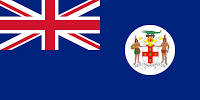 In 1681, a new constitution was adopted in the UK for the governance of Jamaica. It was said to be "royally responsive" but insisted on the value of a local assembly to pass laws. It also depressed privateerism by strengthening the local militia and making the planters dependent on the crown for security. Both Vaughn and Lynch entreated the crown to appoint another governor, which was done on acceptance of 50,000 pounds raised from the planter class in Jamaica. These "negotiations" resulted in Morgan being removed as Lt Governor and also his commission as Captain General being revoked. Morgan's arch nemesis, Thomas Lynch, was appointed Lt Governor and Captain General, in 1682. A few months later Lynch's wife and son died on an island in the Atlantic on their way to rejoin him in Jamaica.
In 1681, a new constitution was adopted in the UK for the governance of Jamaica. It was said to be "royally responsive" but insisted on the value of a local assembly to pass laws. It also depressed privateerism by strengthening the local militia and making the planters dependent on the crown for security. Both Vaughn and Lynch entreated the crown to appoint another governor, which was done on acceptance of 50,000 pounds raised from the planter class in Jamaica. These "negotiations" resulted in Morgan being removed as Lt Governor and also his commission as Captain General being revoked. Morgan's arch nemesis, Thomas Lynch, was appointed Lt Governor and Captain General, in 1682. A few months later Lynch's wife and son died on an island in the Atlantic on their way to rejoin him in Jamaica.
As governor, Lynch immediately implemented the new order. He also removed Morgan, his brother and other associates from the Jamaica House of Assembly.
Lynch carefully mentored two other men who went on to get the governorship of Jamaica, Hender Molesworth, a merchant 30 years his junior, and administrator William Beeston, who was two years younger than Molesworth. These two men were to become extremely powerful and wealthy. They were each in turn, chief military officials, slaveholding planters, and agents earning 7% from handling transactions on behalf of the Royal African Company, which had a monopoly on the trade in enslaved people.
Lynch married the 17 year old Mary Temple from in 1684 and died a few months later. He was buried the day after he died in St Catherine. His grave can still be seen. His daughter by Vere, Philadelphia, went on to marry a wealthy planter/enslaver in Barbados.
Molesworth became acting Lt Governor in 1685, and the same year had to contend with a yearlong war waged by Africans in Jamaica who had gained freedom by their own efforts. In addition to this, he pursued other policies that included annihilating the fledgling settlement of Scotsmen on Golden Island off the shore of Guyana.
A profligate member of the nobility, Christopher Monck, was appointed governor in 1687, and one of the notorious actions of his tenure was to oversee the heroic funeral arrangements of Henry Morgan in 1688.
Morgan was given full military and state honours, including a 22 gun salute - one more than is given to royalty - and was buried in Port Royal. His grave disappeared four years later with the earthquake of 1692. He died without issue leaving his wife, who was also a relation, Mary Elizabeth age 48.
Monck died in office at age 35 and Molesworth was again acting Lt Governor. Molesworth married Thomas Lynch's widow Mary in 1688/9, and he also died in the post in 1689. Mary then returned to England.
In 1689, Major General Francis Watson was commissioned as Lt Governor of Jamaica, a year later enslaved persons on the Sutton plantation in Clarendon staged a war which resulted in an enlargement of the maroons in central Jamaica. Watson was the last of the Lt Governors with his term ending in 1692.
END
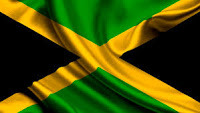
The administrator and the entrepreneur on Biteable.
Having read extended first account dispatches and commentary of the period of history of Jamaica 1509 to 1692, I ask of myself what I should make of it and if the times call for me to take any action.
The most hurtful part of the new information, for me, is the acceptance of a 7% agent commission by governors of the island to handle business on behalf of the company that had a licensed monopoly on the trade of enslaved persons. With that structure in place, the society could not possibly have matured from rampant adventurism to civilization. Indeed, the enslaved persons had no choice but to fight it out or adapt and make the system work for them. I am grateful, and humbled, that many chose the more honourable route of fighting.
For those who did not fight, but chose to use other means to survive and thrive within the context that they found themselves in, they helped to build society that somehow, progressed and has made a positive contribution to the progress of humanity. I hesitate to apply judgement on them
Slideshow 1 on Biteable.
Characters with their birth years and nationalities------------------------------
From circa 600AD to 1662 The Tainos living on Jamaica for more than 1,000 years1470 Juan de Esquivel, Spanish conquistador
1484 Bartolome de las Casas, Spanish haciaenda owner
William Jackson, English, pirate
Cristobal Arnaldo de Ysassi, Spanish Jamaican administrator
Juan Lobolo, African Jamaican maroon chief
1617 Edward D'Oyley, English naval officer and administrator
Richard Guy, English naval officer, planter, politician
1633 Thomas Lynch, English naval officer, administrator, planter
1629 Charles Howard, English military officer and politician and landowner
1635 Henry Morgan, Welsh buccaneer, privateer, planter, politician, administrator
1636 William Beeston, English planter, mercantilist and administrator
1639 John Vaughn, English landowner, peer, administrator
1639 Hender Molesworth, English administrator, planter, mercantilist
Slideshow 1 on Biteable.
 In 1509, Juan de Esquivel, a 39 year-old Spanish man living in Hispaniola was assigned administrative responsibility for the island of Santiago. The authorities wanted Esquivel off the island of Hispaniola, as the influential 28-year-old, Bartolome de las Casas, an owner of a hacienda worked by enslaved Taino people, reported him for his abominable cruelty against the Taino community.Esquivel had arrived as crew on the second voyage of Columbus and had readily engaged in atrocities against the Taino people that was encouraged by his boss Columbus.Esquivel had successfully established two settlements in Hispaniola, but the reports against him by Bartolome could not be ignored. Esquivel lasted four years as governor of Santiago, before he was again removed from office, but those four years left a long legacy.He founded the town of New Seville which was a stable and growing settlement for another 150 years; and a harbour on the south coast of the island bears his name. Through poetic justice, the island of Santiago reverted to a modernised version of its original Taino name and became Jamaica.Esquivel was removed from office in 1513, but remained on Jamaica for the rest of his life.
In 1509, Juan de Esquivel, a 39 year-old Spanish man living in Hispaniola was assigned administrative responsibility for the island of Santiago. The authorities wanted Esquivel off the island of Hispaniola, as the influential 28-year-old, Bartolome de las Casas, an owner of a hacienda worked by enslaved Taino people, reported him for his abominable cruelty against the Taino community.Esquivel had arrived as crew on the second voyage of Columbus and had readily engaged in atrocities against the Taino people that was encouraged by his boss Columbus.Esquivel had successfully established two settlements in Hispaniola, but the reports against him by Bartolome could not be ignored. Esquivel lasted four years as governor of Santiago, before he was again removed from office, but those four years left a long legacy.He founded the town of New Seville which was a stable and growing settlement for another 150 years; and a harbour on the south coast of the island bears his name. Through poetic justice, the island of Santiago reverted to a modernised version of its original Taino name and became Jamaica.Esquivel was removed from office in 1513, but remained on Jamaica for the rest of his life. Spain did little better than ignore the island for another 130 years. It was therefore ripe as a target, and William Jackson - who had a license from his government to pillage Spanish possessions in the Caribbean - scored easily on March 25, 1643.Jackson anchored in Kingston Harbour and his party of 500 men captured the south coast town of St Jago de la Vega. After the conflict was resolved, more than two score of Jackson's men decided to stay on, as they said Jamaica was a terrestrial paradise.
Spain did little better than ignore the island for another 130 years. It was therefore ripe as a target, and William Jackson - who had a license from his government to pillage Spanish possessions in the Caribbean - scored easily on March 25, 1643.Jackson anchored in Kingston Harbour and his party of 500 men captured the south coast town of St Jago de la Vega. After the conflict was resolved, more than two score of Jackson's men decided to stay on, as they said Jamaica was a terrestrial paradise.Eleven years later, in 1655, a poorly organised military force of the revolutionary Commonwealth of England Scotland and Ireland, made a last ditch attempt to redeem their disastrous campaign to capture Hispaniola by going after the weakly defended Jamaica. They followed Jackson's game plan and captured St Jago de la Vega, then a town of 400 houses, some were armed. Boosted by the victory, the island was then quickly militarized by them.
 Combatants of that period whose exploits have had a lasting impact on Jamaica were: soldier Thomas Lynch who was in his early 20s; Edward D'Oyley, a naval officer in his 40s; Richard Guy, a military official; the maroon leader John Lobolo and the Spanish administrator Cristobal Arnaldo Ysassi (Isasi).
Combatants of that period whose exploits have had a lasting impact on Jamaica were: soldier Thomas Lynch who was in his early 20s; Edward D'Oyley, a naval officer in his 40s; Richard Guy, a military official; the maroon leader John Lobolo and the Spanish administrator Cristobal Arnaldo Ysassi (Isasi).Soldier Thomas Lynch and buccaneer Henry Morgan were also involved in power struggles that caused them to face down each other over the ensuing 20 years.
Some historians say that Cristobal Arnaldo de Ysassi's family held the rights to the entire island of Jamaica, and he was determined not to lose his birthright. Largely through his personal efforts, over the course of three years he fixed himself the target of bringing the island back under Spanish control.
 Important to his plans was the support of the maroon people who lived across three pelincos in the hinterlands of Jamaica. The maroons were Africans who had, through their own efforts, self liberated themselves from bondage, but Ysassi somehow believed that they were still sympathetic to the Spanish cause. Unknown to him, his ally - and a man who he described as key to his plans - Juan Lubolo, had been courted by a British military officer, Richard Guy, and had switched allegiances.After losing three pitched battles, and being attacked by both maroons and British, Ysassi last saw Jamaica in 1658 as he departed the north coast by canoe for Cuba. This born Jamaican then disappears from the public record. D'Oyley had met Ysassi's forces and defeated him at Ocho Rios 1657 and again at Rio Bueno in 1658.
Important to his plans was the support of the maroon people who lived across three pelincos in the hinterlands of Jamaica. The maroons were Africans who had, through their own efforts, self liberated themselves from bondage, but Ysassi somehow believed that they were still sympathetic to the Spanish cause. Unknown to him, his ally - and a man who he described as key to his plans - Juan Lubolo, had been courted by a British military officer, Richard Guy, and had switched allegiances.After losing three pitched battles, and being attacked by both maroons and British, Ysassi last saw Jamaica in 1658 as he departed the north coast by canoe for Cuba. This born Jamaican then disappears from the public record. D'Oyley had met Ysassi's forces and defeated him at Ocho Rios 1657 and again at Rio Bueno in 1658.Of the other combatants of that time, Guy went on to become a moderately wealthy planter using enslaved labour, and was also a member of the House of Assembly. He married, and his grave can be seen in Guanaboa Vale.Lubolo's influence and leadership saw him being recognised as a Colonel by the authorities. A peace treaty was signed in 1660 between Lubolo and the governor, granting his palenco peace and privileges for ever. In 1664, however, he was ambushed and killed by another maroon group, but his leadership has been immortalised by the naming of the Juan de Bolas Mountains, the Juan de Bolas River and other place names in central Jamaica.
D'Oyley advanced professionally, and made the transition from being a fighting man to administrator. Between between 1657 and 1662, he was officially in charge of Jamaica. His actions defined the development of the society. He:
-Dispossessed the remaining groups of Taino people by transporting them to Central America;
-Invited the pirates in Tortuga to relocate their headquarters to Port Royal as a strategy to prevent other nations from taking Jamaica as a prize;
-Selected and appointed eleven military officers and one civilian to make up the first House of Assembly. At the end of his commission, he left Jamaica.
Thomas Lynch, the solder who was a part of the invading force of 1655, was chief of staff to D'Oyley. At about age 30, Lynch was appointed Deputy Governor from 1663 for one year. He was also Chief Justice and Provost (Chief Sheriff) of the island. In other words, he was the police and the judge.Lynch appointed a 24 year old Englishman, William Beeston, as his deputy and sent him on official negotiations with the Spanish for the return of British prisoners.
 The politics of Britain changed. In 1660, the United Kingdom was formed and crown favourites were given appointments in colonies. Lynch gave way to a politician Edward Morgan who was Deputy Governor in 1664. Lynch did not have a good relationship with Morgan and he was charged with slander. At least one writer wonders if it was because Lynch wanted to marry a black woman. Morgan's daughter later married fellow Welshman, and the most powerful man in the Caribbean, Henry Morgan, and he left Jamaica, for a while.
The politics of Britain changed. In 1660, the United Kingdom was formed and crown favourites were given appointments in colonies. Lynch gave way to a politician Edward Morgan who was Deputy Governor in 1664. Lynch did not have a good relationship with Morgan and he was charged with slander. At least one writer wonders if it was because Lynch wanted to marry a black woman. Morgan's daughter later married fellow Welshman, and the most powerful man in the Caribbean, Henry Morgan, and he left Jamaica, for a while.The first push to exploit the economic agricultural potential of Jamaica, using a system of enslaved labour, came with Thomas Modyford who, at age 42, was appointed Deputy Governor, arriving in 1664 with 700 planters and enslaved persons. This influx propelled the sugar cane plantation economy into exponential growth mode. Modyford was all about the money and granted privateering licenses, giving 1/10 to the crown and notoriously keeping 1/15th for himself. Lynch did not have a good working relationship with this boss and was relieved of his appointments. Not being a planter or merchant but a mere public employee, Lynch returned for a desk job in Britain.
Modyford's granting of a lucrative privateering license to Henry Morgan in January 1671, led to diplomatic grief for his country and the downfall of his career. Unknown to him, England and Spain had signed a peace treaty in June 1670, and Morgan's pillaging of Panama some months later was an affront to that agreement. Modyford lost his job and was imprisoned for a year.
Thomas Lynch was then knighted in 1670, married Vere Herbert, and appointed as the first Lt Governor of Jamaica. On his return, he continued the policy of issuing licenses to privateers for three years, 1671 to 1674. Henry Morgan was in Britain from 1672 to 1674, was never arrested, and his explanations for his actions were accepted.
In 1674, 36-year-old John Vaughn, a friend of the court, was appointed Lt Governor with the mandate to eradicate the business of privateerism. Concurrent with this, Henry Morgan received a knighthood and accompanied Vaughn to Jamaica where they were joined by former Deputy Governor and friend of Morgan, Modyford. The planters and merchants in Jamaica celebrated the return of Morgan, and Vaughn soon realised that that his authority was curtailed by the former outlaw's great influence across the Caribbean.Administration of the island over the next four years can be described as untidy, at best. Vaughn was corrupt and debauched; Henry Morgan was a drunkard and was secretly collaborating with the French to attack his old enemies - and now allies of his government - the Spanish.In 1678, Vaughn was recalled and 49-year old military veteran and shrewd politician Charles Howard was sent out as Lt Governor. Howard had been a supporter of the revolution, but with the restoration of the crown, easily reverted to being a royalist. He openly flaunted the ban on privateering and was eased out of the system, departing Jamaica after two years in 1680, leaving Henry Morgan again in the position of Lt Governor (Acting). Morgan personally undertook to increase the number of big guns around Jamaica from 60 to 100. In addition, he declared martial law twice in response to perceived threat of the French.
 In 1681, a new constitution was adopted in the UK for the governance of Jamaica. It was said to be "royally responsive" but insisted on the value of a local assembly to pass laws. It also depressed privateerism by strengthening the local militia and making the planters dependent on the crown for security. Both Vaughn and Lynch entreated the crown to appoint another governor, which was done on acceptance of 50,000 pounds raised from the planter class in Jamaica. These "negotiations" resulted in Morgan being removed as Lt Governor and also his commission as Captain General being revoked. Morgan's arch nemesis, Thomas Lynch, was appointed Lt Governor and Captain General, in 1682. A few months later Lynch's wife and son died on an island in the Atlantic on their way to rejoin him in Jamaica.
In 1681, a new constitution was adopted in the UK for the governance of Jamaica. It was said to be "royally responsive" but insisted on the value of a local assembly to pass laws. It also depressed privateerism by strengthening the local militia and making the planters dependent on the crown for security. Both Vaughn and Lynch entreated the crown to appoint another governor, which was done on acceptance of 50,000 pounds raised from the planter class in Jamaica. These "negotiations" resulted in Morgan being removed as Lt Governor and also his commission as Captain General being revoked. Morgan's arch nemesis, Thomas Lynch, was appointed Lt Governor and Captain General, in 1682. A few months later Lynch's wife and son died on an island in the Atlantic on their way to rejoin him in Jamaica.As governor, Lynch immediately implemented the new order. He also removed Morgan, his brother and other associates from the Jamaica House of Assembly.
Lynch carefully mentored two other men who went on to get the governorship of Jamaica, Hender Molesworth, a merchant 30 years his junior, and administrator William Beeston, who was two years younger than Molesworth. These two men were to become extremely powerful and wealthy. They were each in turn, chief military officials, slaveholding planters, and agents earning 7% from handling transactions on behalf of the Royal African Company, which had a monopoly on the trade in enslaved people.
Lynch married the 17 year old Mary Temple from in 1684 and died a few months later. He was buried the day after he died in St Catherine. His grave can still be seen. His daughter by Vere, Philadelphia, went on to marry a wealthy planter/enslaver in Barbados.
Molesworth became acting Lt Governor in 1685, and the same year had to contend with a yearlong war waged by Africans in Jamaica who had gained freedom by their own efforts. In addition to this, he pursued other policies that included annihilating the fledgling settlement of Scotsmen on Golden Island off the shore of Guyana.
A profligate member of the nobility, Christopher Monck, was appointed governor in 1687, and one of the notorious actions of his tenure was to oversee the heroic funeral arrangements of Henry Morgan in 1688.
Morgan was given full military and state honours, including a 22 gun salute - one more than is given to royalty - and was buried in Port Royal. His grave disappeared four years later with the earthquake of 1692. He died without issue leaving his wife, who was also a relation, Mary Elizabeth age 48.
Monck died in office at age 35 and Molesworth was again acting Lt Governor. Molesworth married Thomas Lynch's widow Mary in 1688/9, and he also died in the post in 1689. Mary then returned to England.
In 1689, Major General Francis Watson was commissioned as Lt Governor of Jamaica, a year later enslaved persons on the Sutton plantation in Clarendon staged a war which resulted in an enlargement of the maroons in central Jamaica. Watson was the last of the Lt Governors with his term ending in 1692.
END

Published on January 02, 2018 07:08



